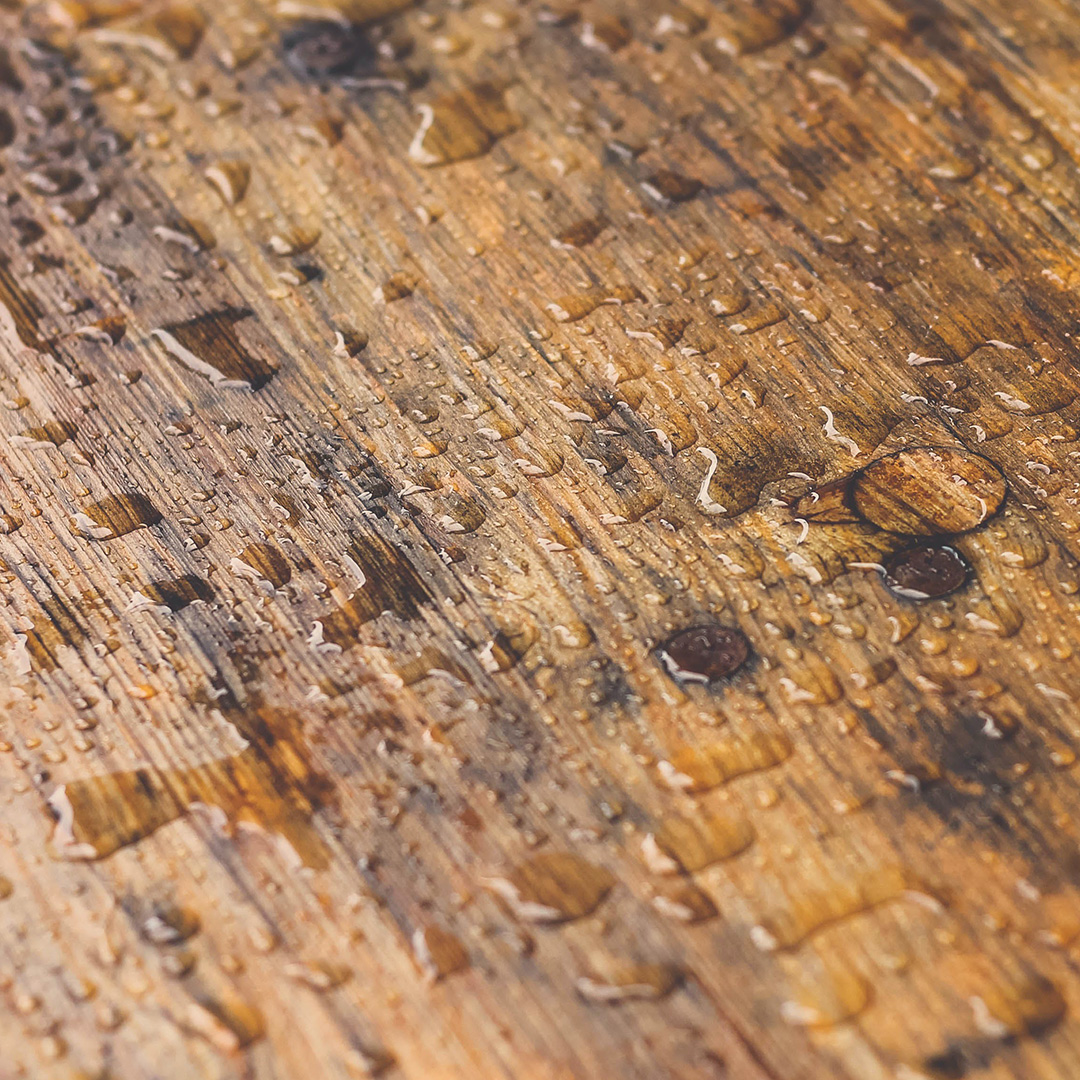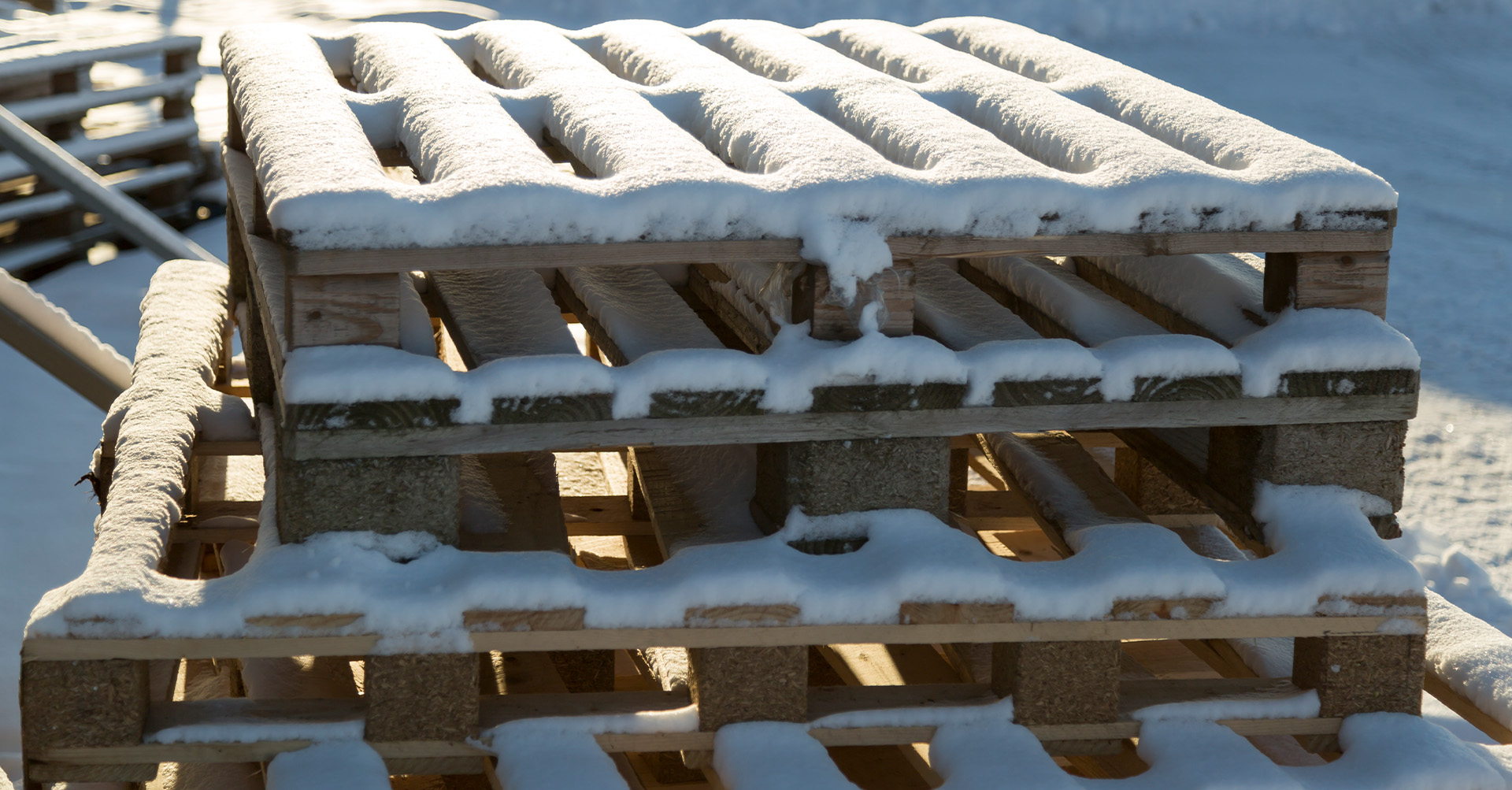As the chilly embrace of winter approaches, businesses and manufacturers should turn their attention to an often-neglected aspect of material care: winterizing your wood packaging. This winterizing process goes beyond just protection, it ensures the longevity and durability of your wooden materials in the face of harsh winter conditions. Let’s delve into how and why you should prioritize wood packaging in the winter months and the importance of winterizing.
Weather and Winterizing Wood Packaging – the Inside Scoop
Winterizing is beneficial because different winter weather conditions can impact your wood packaging in various ways. Even if you are not in a state that gets a lot of snow, other seemingly less important conditions can cause substantial damage. Before we get to the benefits of winterizing your wood packaging, we will discuss which environmental factors to look out for.

Moisture is one of the biggest threats to wood packaging and one of the main reasons why winterizing any wood packaging you may use is important. Wood has a natural tendency to absorb and release moisture based on the environmental conditions around it, leading to issues such as swelling, warping, and decay. In the realm of packaging without winterizing wood, this exposure to moisture during transportation or storage can compromise the structural integrity of the packaging. To mitigate risks, winterizing, implementing proper storage and transportation conditions is imperative.

Freezing weather can pose its own set of distinct challenges to wood packaging, which can also affect structural integrity. Winterizing your packaging, it should be done with freezing in mind. As temperatures drop, the moisture within the wood packaging may freeze, which can cause it to expand and exert pressure on the wood fibers. This pressure can lead to cracks or fractures, which in turn leads to more pallet failure. In addition, the freeze-thaw cycle, where temperatures fluctuate between freezing and thawing, can exacerbate the stress on the wood packaging. These cycles can lead to advanced deterioration of the packaging material over time. Freezing weather compromises the overall strength and reliability of the wood, which makes it more prone to breaking during transportation and storage. Winterizing any wood packaging can help to ensure that it retains its durability and functionality.

Winterizing your wood packaging is also important because of the profound impact snow can have on it. When left to the elements, the accumulation of snow on wooden pallets and crates can lead to increased weight posing a risk to the integrity of the structures. Additionally, accumulating snow can result in compression, deformation, or breakage. That’s why winterizing is crucial for wooden packaging to ensure the longevity and reliability of your products.
Why Winterizing Packaging is Important
1. Preventing Moisture Damage:
Winter brings with it a myriad of challenges, including snow, rain, and fluctuating temperatures. Unprotected wood is susceptible to moisture absorption, leading to swelling, warping, and even mold growth. Winterizing involves sealing the wood, creating a barrier against these elements, and ensuring your packaging remains intact. Winterizing and storing your wood packaging inside, away from the elements will help to protect and keep it from breaking down prematurely.
2. Enhancing Durability:
The harsh winter conditions can accelerate wear and tear on wooden packaging. Winterizing your packaging extends the life of your wood materials, reducing the need for frequent replacements. This not only saves resources but also minimizes your environmental impact. Packaging will last longer and be more effective when winterizing and taking care of it.
3. Brand Reputation:
Wood, when exposed to winter elements, can begin to look warped or damaged. Winterizing can also help to prevent mold, which some customers may not like. Winterizing helps maintain the aesthetic appeal of your packaging, ensuring it continues to make a positive impression on customers and anyone that may encounter it. This is a reflection on your company and in turn the reputation of your brand.
4. Sustainable Practices
Even though they may seem uncorrelated, winterizing aligns with sustainable business practices. By winterizing and protecting wood packaging, you contribute to a reduction in waste and promote a circular economy. Sustainable choices not only benefit your business but also reflect positively on your brand image.
5. Cost-Effective Solution:
Investing in winterizing measures may seem like an additional expense initially, but it proves to be a cost-effective solution in the long run. The expenses associated with repairing or replacing damaged wood can far exceed the upfront cost of winterizing.
6. Ensuring Product Integrity:
If your business involves transporting goods, winterizing wood packaging can be crucial for ensuring the integrity of your products. Winterizing and protecting them from the elements prevents potential damage during transit, maintaining the quality and reliability of your products. Winterizing helps to prevent in-transit damage that can cost you time and money.
7. Compliance with Regulations:
In certain industries, there are regulations and standards in place regarding packaging materials. Winterizing wood packaging helps ensure compliance with these regulations, avoiding potential legal issues and fines. This is especially true if you are in an industry that cannot have mold growth. When winterizing your packaging, it will help avoid the conditions that lead to mold growth on wood packaging.
Wrapping Up the Winterizing Wisdom
In conclusion, winterizing wood packaging is not merely a precautionary measure; it’s a strategic choice for the longevity of your materials and a commitment to sustainable practices. As winter sets in, taking the time to protect your wood packaging pays dividends in terms of durability, aesthetics, and the overall health of your supply chain. Winterizing your products is never wasted and prepares you for any challenges the winter weather may present.







